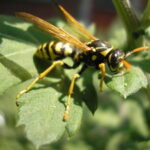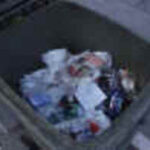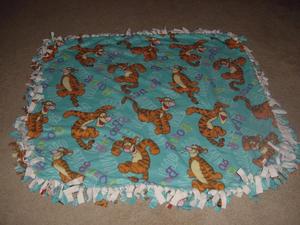A few weeks ago I destroyed a nest of German wasps that I found in my garden. It was a relatively simple procedure and cost me less than $4. The article explains what I did, and may help you decide how to deal with a nest that you find.
As with all insects, wasps play a vital role in nature. They feed on other pests, which helps to control their numbers. Unfortunately, wasps annoy us humans. Many people think they look unpleasant and they have a reputation for stinging without reason. Towards the end of summer they become aggressive, and because they are attracted to sweetness they are drawn to our picnics and other outdoor activities.
I first realized there was a wasps nest in our backyard in May. As I stood outside, near our small pond, I realized there was a regular traffic in wasps over the pond and into the ivy on the fence behind it. A few minutes of observation convinced me there was a wasps nest in there.
In May the nest would have been relatively small. The queen had found a dry, sheltered spot in which to create her nest of grey, papery material. Over time, however, the nest would grow to become home to possibly several thousand wasps and I didn’t want that near my house.
My particular concern was because the nest was only a couple of feet above the ground the wasps would be coming and going at a height where they’d annoy people in the garden. If the nest had been in the roof I might have left it. Wasps don’t hibernate in their nests, or return the following year, so there’s no harm in leaving a nest for a season – it will be gone the next year.
In mid-June I decided it was time to deal with the wasps. The first step was to identify the exact location of the nest. One cool evening I approached the patch of ivy behind the pond with some long-handled clippers, and began to cut it back. I waited until evening because that’s when the wasp activity is reduced. A end of a wet, grey day is the best time to get close to a next with minimum risk.
I soon revealed a large grey mass, slightly smaller than a soocer ball. It has a hole at the bottom through which the wasps came and went. This was the nest. It probably had a population of up to one hundred live wasps.
I could have paid a pest exterminator to deal with the nest and it would have cost me anything from $50, possibly a lot more. So I decided to visit our local hardware store to see what they had to offer. A number of products were on display and I chose the cheapest – a $3.50 tube of Ant Killer powder. This also had instructions on the pack for how to use it with a wasps’ nest.
A word of caution – when you’re dealing with a wasps’ nest there is a risk of being stung. If you are allergic to insect stings, or have never been stung (so don’t know if you are allergic), I recommend you don’t take on a nest yourself. An extreme allergic reaction can, on rare occasions, kill. So if you are in any doubt, it’s best to play it safe and keep well away.
However, I was confident that a wasp sting would do me know harm. So having exposed the nest I opened the Ant Killer powder. This comes in a long plastic bottle with a tiny hole in the top, allowing you to squirt the powder a short distance. I squirted some powder onto the nest and the surrounding ivy, particularly around the base of the nest.
I then left it overnight. The following day I repeated the process. A number of dead wasps were already visible. I decided to take a long stick and poke a small hole in the side of the nest. Into this I squirted more powder. I could hear frantic buzzing from inside as it covered the wasps.
After another hour the nest went quiet. I repeated the process one more time, and by now I was confident that most, if not all, of the wasps, were dead.
I then began the process of removing the nest. I wanted to show my children what the inside of a nest looks like – you don’t see them that often. So I carefully cut it away from the ivy stalks and took it out to show them. We dismantled it. Inside there were new wasps hatching from their hexagonal cells, but soon picked up some of the poison and died.
I have proved that it’s possible to eliminate a wasps nest at very low cost. However, there is a risk of being stung. If I had not found the nest until later in the summer, when it was larger and the wasps more aggressive, I don’t know whether I’d have done the same thing.





